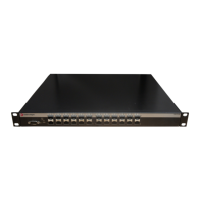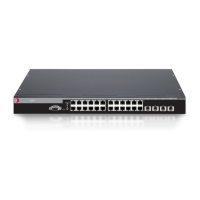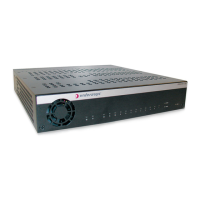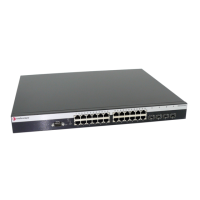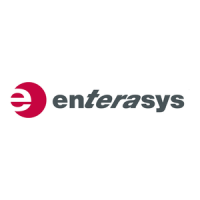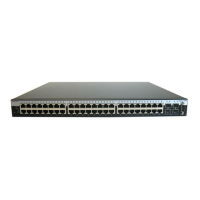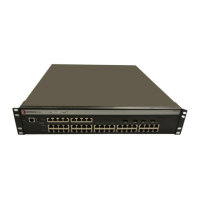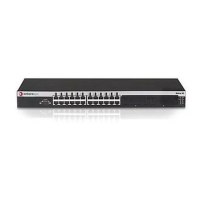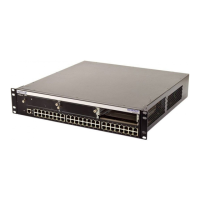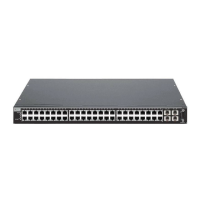ip helper-address
25-18 IP Configuration
Usage
In order to actually forward protocols, you must configure an IP helper address on the individual
router interfaces with the command “ip helper-address” (page 25-18).
If a certain service exists inside the node, and there is no need to forward the request to remote
networks, the “no” form of this command should be used to disable the forwarding for the specific
port. Such requests will not be automatically blocked from being forwarded just because a service
for them exists in the node.
The no form of this command removes a UDP port or protocol, disabling forwarding.
Examples
The following example globally disables IP forwarding for UDP port 69.
C3(su)->router(Config)#no ip forward-protocol udp 69
The following example disables IP forwarding for UDP port 69 on a specific interface.
C3(su)->router(Config)#interface vlan 10
C3(su)->router(Config-if(Vlan 10))#no ip forward-protocol udp 69
ip helper-address
Use this command to enable the DHCP/BOOTP relay agent on a Enterasys C3 routed interface
and/or to forward broadcast traffic identified with the ip forward-protocol command to a unicast
address. Enabling the relay agent allows forwarding of client DHCP/BOOTP requests to a DHCP/
BOOTP server that does not reside on the same broadcast domain as the client. Up to 6 IP helper
addresses may be configured per interface.
The no form of this command disables the forwarding of UDP datagrams to the specified address.
Syntax
ip helper-address address
no ip helper-address address
Parameters
Defaults
None.
Mode
Interface configuration: C3(su)->Router1(Config-if(Vlan 1))#
Usage
Typically for DHCP/BootP, when a host requests an IP address, it sends out a DHCP broadcast
packet. Normally, the router drops all broadcast packets. However, by executing this command,
you enable the routed interface to pass DHCP broadcast frames through, sending them directly to
the remote DHCP server’s IP address.
The DHCP/BOOTP relay agent will detect DHCP/BOOTP requests based on UDP source and
destination ports. It will then make the necessary changes to the packet and send the packet to the
DHCP server. The changes include:
address Address of the host where UDP broadcast packets should be forwarded.
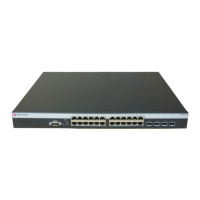
